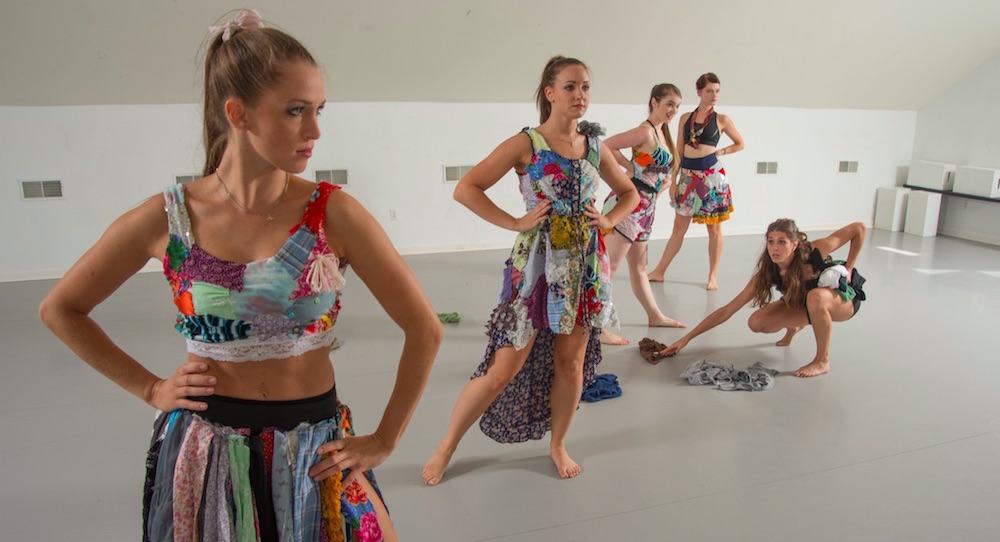Through centuries and through decades, artistic trends have been clear. Yet artists who truly stand out are ones who push those trends, sometimes steering things in a completely new direction. Artists making work that resonates also don’t solely follow the pack – in the known norm, or diversion from it – but also apply it to current challenges we face, or accomplishments in which we can share.
NYC-based Vanessa Long Dance Company (VLDC) is pushing forward conversations on contemporary issues, as well as doing so with innovative artistic daring. The company’s newest work, Consume, puts a mirror up to modern consumerism with various movement idioms, dance-theater methods and more.
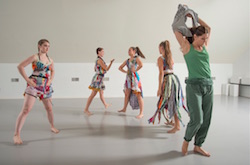
Vanessa Long Dance Company. Photo by Hub Willson Photography.
The piece is also quite purposefully designed to be accessible to all types of audience members. All kinds of people can thus experience the power of art to drive discussion on issues we face together today. To learn more about the work and the company, Dance Informa spoke with Vanessa Long, VLDC founder and director, as well as choreographer of Consume.
How would you define VLDC’s unique work and contribution?
“I believe that we are unique in the way our work is created to affect our audience. Combining theater and dance in our work enhances both elements – elevating each other as the story progresses. Tackling the issues we do helps to educate audiences, and hopefully will help bring a better world. But beyond those two parts of our mission statement, what was important to me when forming the company was to create work that anyone could understand and process.
We currently have a lot of [dance] work that is abstract, which is beautiful and interesting but sometimes alienates audiences. I have often heard dance viewers saying that they did not enjoy performances because they could not understand what was going on, or they found themselves disengaging. When I started the company, I wanted to create work that any audience member could appreciate.
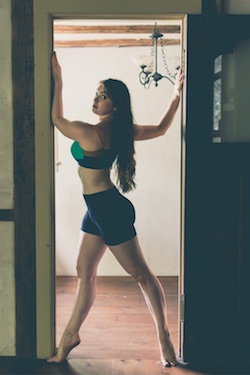
Vanessa Long. Photo by JVMFoto.
Our world has changed so much over the past 10 years, and people have much shorter attention spans than in the past. I believe that we have to adjust to, and grow with, our audiences as their world changes. Another aspect of my work is all of my pieces are basically vignettes. They each follow a linear storyline focused on the issue at hand, with creative characters to push the story forward.”
More specifically, how does Consume work toward that contribution? Why is the work’s focus timely and important?
“Ah, this piece is close to heart. Consume is focused on our growing issue of clothing waste. This is a new issue, and something I never thought about until I started researching it. This piece has a lot of character work, as the ensemble dancers are continually changing and shifting their characters. The ensemble is meant to represent the fashion industry. They start as mannequins, then shift to models, then to factory workers.
To me, this subject is so important to get out to audiences. We hear a lot about plastic waste, but there is a lot of silence surrounding clothing waste and the fast fashion industry. America has become a consumer-focused society, and because of it we are affecting lives (through extreme pollution and poor working conditions) and ruining our planet. My hope is that through this piece I can inspire my audience to be more conscious consumers and more responsible when it comes to waste.”
Please comment on the same aspects in regards to past works from your company.
“When I first started the company, my work was more political in nature, but has recently shifted to more environmentally-focused work. Our piece Urban Tumbleweed focuses on plastic waste, and uses 1,480 plastic bags on stage. This coming season, I will create a piece entitled Adam’s Ale which will explore water conservation. I suppose that one of the factors I always have in my mind when creating a piece is that if the majority of the population worked together, and each of us put a small amount of effort into whatever issue we face, we could conquer just about anything. I think that is a beautiful thing, and it gives me a lot of hope for the future.”
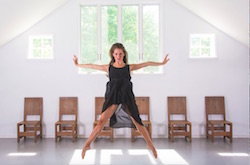
Vanessa Long Dance Company. Photo by JVMFoto.
It seems as if your work intelligently blends different movement forms. What’s your approach to doing that in a way that results in a cohesive final product?
“Yes, each of our pieces are very different style-wise. I try to match the movement style with the social or political issue we are presenting. My process when creating work is to start with an idea or subject that I want to focus on. From there, I research the subject heavily and create a storyline for the piece. I then choose music and create movement. After I’ve completed these steps, I go into rehearsal and teach my dancers the piece, and we work to bring the piece to life. Usually, by the time I get to the storyline stage of the piece, I can already see it in my mind’s eye, so the rest of the steps come easily.
I can’t say that I have [any other] certain approach to making everything cohesive, [but] it seems to always work out cohesively. Once I have a piece finished, I love to take it to performances that [include] audience feedback. This allows me to make sure my idea is clear to an audience, and that it is effective in the way that I want it to be. I find those types of performances extremely important in the development of new work.”
Regarding your dancers, what do you look for when casting, and what do you expect them to keep bringing to the table? How do you hope to see them grow?
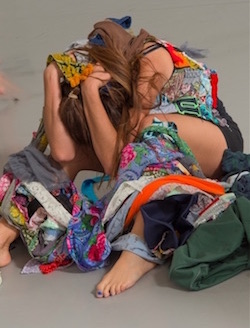
Vanessa Long Dance Company. Photo by Hub Willson Photography.
“I’d say first and foremost, I look for creativity in my dancers. I believe that dancers are just as much artists as choreographers, and I like to give them moments that they can explore within the character. For instance, we have a piece in our repertory entitled Boys Will Be Boys, which focuses on street harassment. During the piece, we have a street scene where I gave each dancer a character, and from there they can interact with the other dancers and expand on their character. I love watching this part of the piece because each time is different.
I also look for smart dancers who can take risks and are not afraid of failure. Risks are so important to my work and to the company. I hope that my dancers gain improvisational skills and explore risks and ideas when working with me. I hope to see them grow in those ways.”
By Kathryn Boland of Dance Informa.


